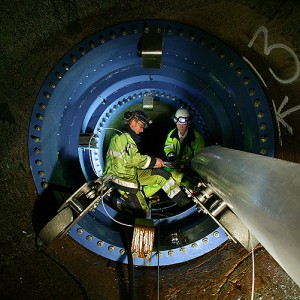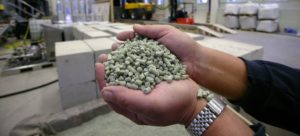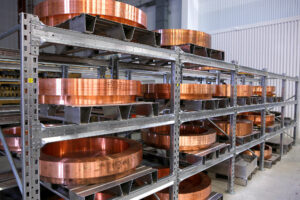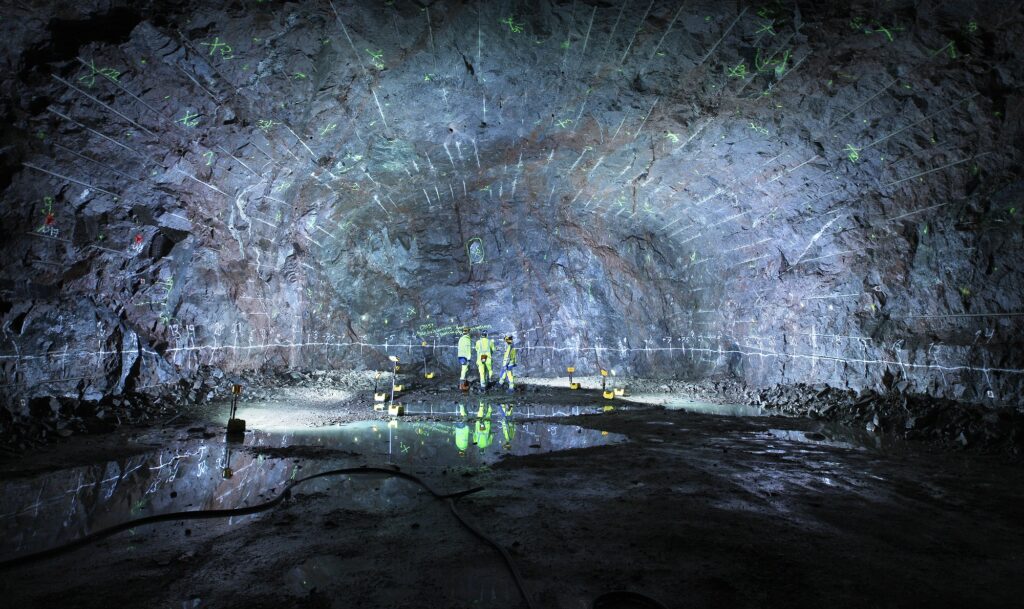Research and development
A structured and objective-driven research and development programme, including both theoretical assessments and practical test in the laboratory and in full scale, is a firm requirement for a successful nuclear waste programme. The objective of such a programme is to secure the future safe management and final disposal of nuclear waste by ensuring the knowledge and competence needed to develop a safety case, investigate and evaluate a potential site, develop barrier design and also construct and operate the nuclear facilities.
Our research and development services aim to contribute to our customers’ planning and development of their specific R&D needs. We do this by collaborating with our customers and supporting them with the help of SKB’s experts in the specific research and technology areas.
Our research facilities:
Äspö Hard Rock Laboratory

SKB’s research village on the island of Äspö comprises a number of facilities, the best-known being the underground Hard Rock Laboratory, operational since 1995. The whole area around Äspö was actually SKB’s first “dress rehearsal” and preparation for a site characterisation programme that we knew we would be carrying out once suitable candidate sites for a deep repository were identified in the country. During the early 1990s a detailed site characterisation programme was carried out for the Äspö site and specific equipment for quality assured measurements and sampling was developed in collaboration with the network of contractors, universities and other experts. For the construction of the tunnel we engaged various contractors to carry out the excavation using different methods, such as drill and blast, and tunnel boring machines. The facility is used for research, development and full-scale demonstration of the actual equipment and materials to be used in SKB’s repositories. SKB has carried out long-term and short-term tests on a wide range of subjects related to geological disposal, from microbes and groundwater chemistry to engineering, repository production and disposal processes. The Äspö research village also includes an accredited water chemistry laboratory for sampling and analysis, as well as a multipurpose test facility where we investigate buffer materials, buffer emplacement logistics, equipment, etc.
Multipurpose test facility

The Multipurpose test facility is located at the Äspö research village. Here we develop and test the bentonite clay required in the Spent Fuel Repository, both as a buffer and as a backfill material for the emplacement tunnels.
Experiments and trials are carried out in the Multipurpose test facility on bentonite in various forms. It provides, for instance, equipment for mixing bentonite materials and manufacturing pellets, as well as tools to lift the buffer rings. There is a specially adapted robot to stack the blocks of bentonite.
In its 450 sqm hall there are also full-scale and half-scale models of the emplacement tunnels in which installation equipment can be tested in controlled circumstances. There are also two holes in the floor intended to resemble the emplacement holes in the repository. This is where the emplacement process can be tested and we can find out how the bentonite reacts to differences in the flow of water. Trials are also made deep in the rock in the Äspö Laboratory to test equipment in conditions such as those in the final repository.
The Canister Laboratory

The Canister Laboratory was inaugurated in 1998. This is where we conduct research on the copper canister where the spent nuclear fuel will be emplaced before disposal in the bedrock of the spent fuel repository. We explore materials science, detail the manufacturing process and how it will be industrialised into serial production, develop the process of sealing the base and lid onto the copper tube to form the canister, and how quality assurance of the final product can be performed before shipping it to the disposal site.
Last review: June 21, 2022
How we support you
Last review: June 21, 2022
